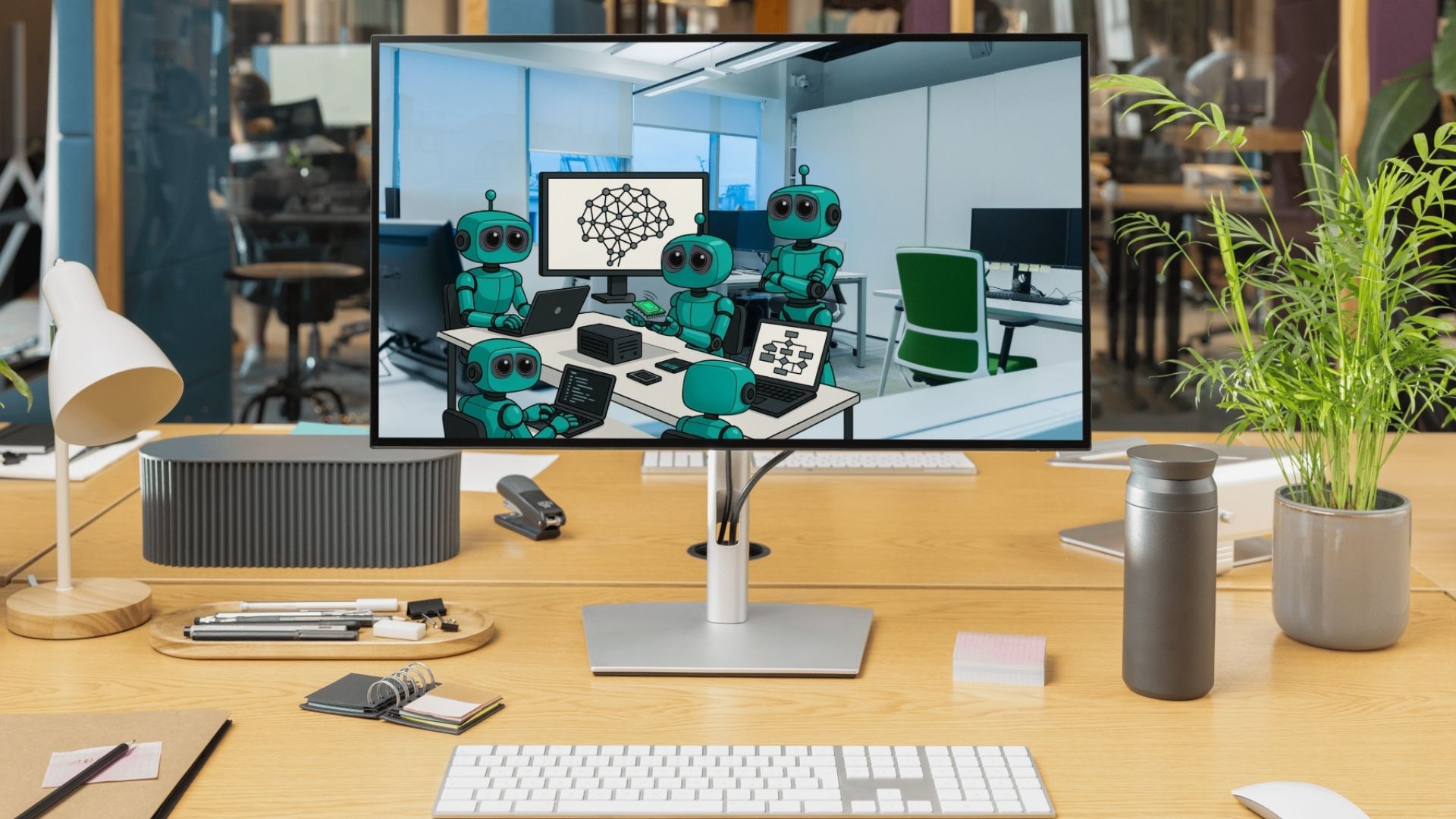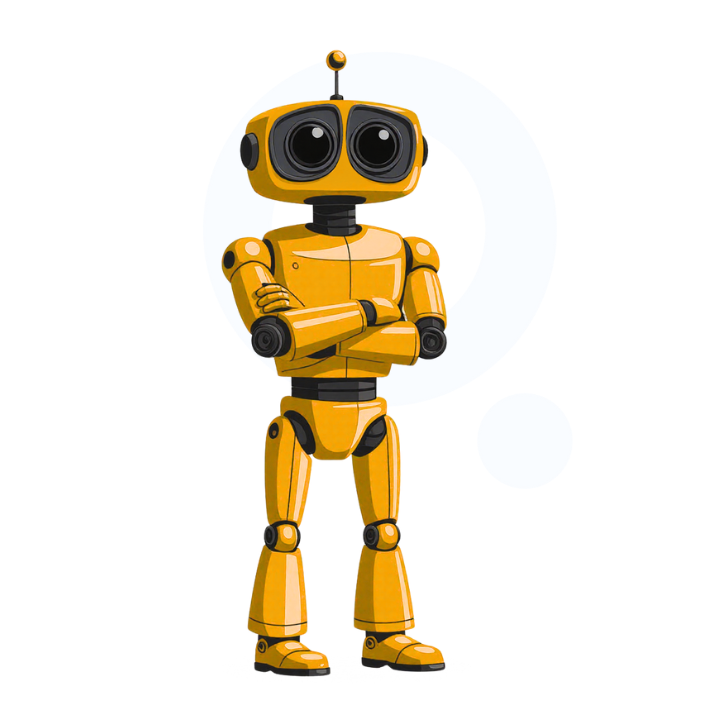AI Self-Writing Software
AI Workers & AI Agents conduct end-to-end software development, from requirements gathering and architecture design to deployment, testing, and ongoing maintenance.

WHAT WE CAN DO
Reduce Human SDLC Reliance Up To 95%
Your AI-powered workforce transforms how software is scoped, built, tested, deployed, and maintained. At the core:
AI Workers: Fully autonomous contributors that perform entire job roles across the SDLC.
AI Agents: Focused, intelligent assistants that handle repetitive or complex tasks in partnership with your human team.
EVERY SDLC WORKFLOW EXECUTED AUTONOMOUSLY
An AI-powered SDLC nearly eliminates manual execution.
| SDLC Stage | AI Role Example | % Human Involvement |
|---|---|---|
| Requirements Gathering | User Story Extractor from Ticket History | 40% |
| System Design | Architecture Diagram Generator | 10% |
| Development | Full Stack Code Builder | 5% |
| Code Review | Compliance & Linting Checker | 20% |
| Testing & QA | Automated Test Case Generator & Executor | 10% |
| DevOps & CI/CD | Pipeline Configuration & Monitoring Agent | 15% |
| Security & Compliance | Vulnerability Scan & Patch AI | 10% |
| Documentation | AutoDoc Generator from Code & Commits | 5% |
| Release Management | Version Control & Release Coordinator | 25% |
| Maintenance & Support | Bug Triage Bot + Hotfix Patch Generator | 15% |
SELF-FUNDING PARTNERSHIP ENSURES ROI
Deploy an AI Workforce with
no risk and no upfront investment.
We contractually guarantee ROI.

SDLC: ROLES AUTOMATION
A strategic evaluation of AI automation potential across key roles in the Software Development Life Cycle.
Explore how AI can transform the responsibilities of Software Developers, Quality Assurance Engineers, and DevOps professionals.
By breaking down specific tasks within each role, we highlight where AI offers high efficiency gains, where human oversight remains essential, and how organizations can balance technology with expertise to drive productivity and innovation.
AI Software Developer
Effort Split: Human: 40% | AI: 60%
National Average Pay Range for This Role: $77,807 – $195,932/year
| Task Name | AI Capability | Human Oversight |
|---|---|---|
| Writing application code Notes: AI can generate boilerplate and refactor routines. |
⚠️ Medium | ⚠️ Medium |
| Implementing features Notes: AI can scaffold UI and service integrations, but business logic needs human design. |
⚠️ Medium | ⚠️ Medium |
| Code debugging Notes: AI can identify syntax and runtime errors; human review still required. |
✅ High | 🚫 Low |
| Optimizing performance Notes: AI can suggest optimizations; domain knowledge needed to apply correctly. |
⚠️ Medium | ⚠️ Medium |
| Writing documentation Notes: AI can draft based on code; human validation ensures accuracy. |
✅ High | 🚫 Low |
| Code reviews Notes: AI can catch common issues; final judgment by humans. |
⚠️ Medium | ⚠️ Medium |
AI Quality Assurance Engineer
Effort Split: Human: 35% | AI: 65%
National Average Pay Range for This Role: $65,300–$161,800 per year
| Task Name | AI Capability | Human Oversight |
|---|---|---|
| Test case design Notes: AI can generate test outlines; human defines cases for edge cases. |
⚠️ Medium | ⚠️ Medium |
| Automated test scripting Notes: AI can write scripts for standard scenarios. |
✅ High | 🚫 Low |
| Exploratory/manual testing Notes: Human expertise critical; AI may assist as support. |
🚫 Low | ✅ High |
| Regression testing Notes: AI excels at running and comparing regressions. |
✅ High | 🚫 Low |
| Bug triage Notes: AI can categorize and prioritize issues; humans decide severity/impact. |
⚠️ Medium | ⚠️ Medium |
| Reporting test results Notes: AI can summarize metrics; human intervention ensures context. |
✅ High | 🚫 Low |
AI DevOps Engineer
Effort Split: Human: 35% | AI: 65%
National Average Pay Range for This Role: $84,378 – $196,355
| Task Name | AI Capability | Human Oversight |
|---|---|---|
| Infrastructure provisioning Notes: AI can generate IaC templates; humans define architecture. |
✅ High | 🚫 Low |
| CI/CD pipeline setup Notes: AI can configure standard pipelines; edge-case handling needs humans. |
✅ High | 🚫 Low |
| Monitoring & alerting Notes: AI can analyze logs and suggest alerts; human calibrates thresholds. |
⚠️ Medium | ⚠️ Medium |
| Incident response Notes: AI can provide runbooks; humans execute and analyze. |
⚠️ Medium | ⚠️ Medium |
| Security and compliance checks Notes: AI can detect misconfigurations; humans review fixes. |
✅ High | 🚫 Low |
| Performance tuning Notes: AI can suggest scaling options; humans assess tradeoffs. |
⚠️ Medium | ⚠️ Medium |
CUSTOMER USE CASE: A PRIVATE HEALTHCARE SYSTEM

72% reduction on human staff reliance
A hybrid AI + Human Worker strategy streamlines revenue cycle management (RCM) operations.
Forward-thinkers see the competitive advantage: leaner operations, lower costs, and scalable AI workforces that don’t get sick, quit, or need training.
Your Business is Ready. Is Your CIO?
Most CIOs and IT teams fear AI because they see it as a threat. They push back on enterprise AI adoption, claiming integration challenges, security risks, or compliance issues. Meanwhile, forward-thinking COOs and CFOs see the competitive advantage—leaner operations, lower costs, and scalable AI workforces that don’t get sick, quit, or need training.
Ask your CIO this:
Why are we still paying for outdated SaaS automation tools when AI can handle execution?
Why are we outsourcing repetitive processes when AI Digital Workers can do the job better and faster?
If AI is so disruptive, why are we letting IT slow us down instead of leading the transformation?
YOUR BUSINESS IS READY FOR AI. IS YOUR CIO?
If you’re still paying for outdated SaaS automation tools, or outsourcing development – let’s discuss an AI workforce strategy.
ready to put SDLC on autopilot?


Let's discuss possibilities.
We’ll reach out to schedule some time for a demo and discussion.
